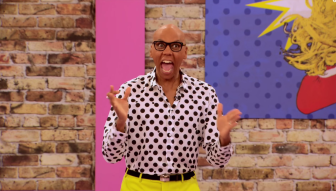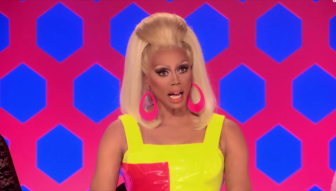
Premiering on Logo TV early March, the reality series “Rupaul’s Drag Race” follows 14 men who compete in a series of challenges to become “America’s Next Drag Superstar.” The show, hosted by 54-year-old drag icon RuPaul Charles, has garnered high ratings and raises questions about modern manifestations of LGBT trends.

“I feel like a Drag Race is really a sort of a glamorized, televised representation of ball culture,” says sophomore Gabriel Igtanloc. “I just love it so much because it’s fun, outrageous and seeing men dress as women is something entirely different.”
Historically, ball culture refers of drag queens congregating in groups, called drag “houses.” Participants imitate fashion, jest and “throw shade” at each other, and walk a runway.
“I learned about drag culture simply because I was curious and wanted to know more. I know some people just watch the drag shows for the fun and craziness, but the whole thing represents a culture that I feel is important,” says Igtanloc.
Some drag queens today decide to play up a carefully-constructed character and perform in an exaggerated manner. Others dress up with a final goal of emulating and looking exactly like a female pageant performer.
“There are so many different types of drag queens,” says senior Elena Ralls. “The diversity on the show is really apparent, and I just love how the drag queens are really funny and sassy.”
Although RuPaul’s Drag Race celebrates a diverse cast of performers, the show has also come under fire for perpetuating flamboyant stereotypes that pervade LGBT society.

“It’s still a reality show,” says senior Catherine O’Brien. “I don’t feel like it’s a complete picture of the gay community. Yes, people can get the wrong idea from anything, but what’s important is that it helps to start dialogue, and that’s what’s most important.”
“There’s still a huge misconception out there that all the men who do drag just want to be women,” says sophomore Ty Gallegos. “No, they’re simply playing into a character. Drag has everything to do with breaking gender roles, yet staying open-minded. A man can wear a dress, wig, and makeup while ‘slaying’ everyone out there and still be a man at the end of the day. Drag culture has been around forever, and it’s an important block of gay culture.”
Ralls feels that Drag Race’s focus isn’t always on drag queens.
“Reality TV is going to portray the extremes of any culture,” says Ralls. “Not everyone shown in Jersey Shore is actually going to act that crazy and violent in real life, and I could say the same about RuPaul’s Drag Race. I mean, I could even say that Drag Race honestly doesn’t play into the stereotypes, and instead gives the viewer a satirical look at how people think drag queens are. Drag is unique for everyone who does it, and if you can make someone think differently about the world through what you do, then I think you’re definitely doing something right.”



